“One of the most photographed natural phenomena in Northern Ireland and a popular attraction for tourists from across the world”

(c) Matthew Woodhouse Photography. No form of reproduction of an image, including copying or saving digital files, or the alteration or manipulation of said images, or the reproduction of prints is authorised unless accompanied by a written sales invoice issued by Matthew Woodhouse granting specific usage rights for an agreed fee.
GRACEHILL HOUSE
James Stuart built Gracehill House in c.1775 and named it after his wife, Grace Lynd. The family planted an avenue of over 150 beech trees along the entrance to the Georgian estate. It was intended as a compelling landscape feature to impress visitors as they approached Gracehill House. Today this unique, tranquil and spellbinding tunnel of ancient beech trees stretches along the Bregagh Road, intertwining and entangling to create a spectacular fusion of light and shadow.
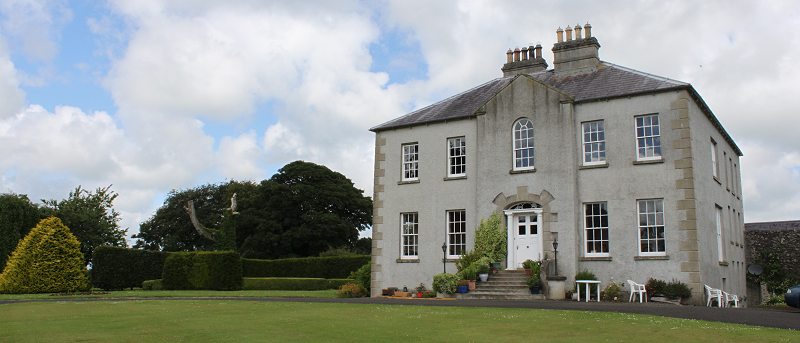
GRACEHILL HOUSE *Strictly private residence
The large estate surrounding the house has a royal heritage dating back to the early 17th century. King James 1 granted the land to a cousin who drowned on his way to Ireland before he could take possession of his new home. The estate then passed to his grandson, William Stuart, and remained in the Stuart family for many years.
The house and immediate grounds are now privately owned with some of the estate developed into a popular 18 hole parkland golf course and The Hedges Hotel.
Two centuries later, the ethereal tunnel remains a magnificent sight and has become known as The Dark Hedges, one of the most photographed natural phenomena in Northern Ireland and a popular attraction for tourists from across the world. With its mysterious and spectacular play of light and tranquillity the site has inspired visiting artists and photographers. Antrim-born composer Elaine Agnew premiered her compelling Dark Hedges composition at the BBC Proms in 2012.
THE GREY LADY
A favourite local ghost story features the grey lady, a spectre that glides along the Bregagh Road, sashaying between the gnarled trees. She vanishes from sight when she passes the last tree.
Whilst some local people believe she is the ghost of a maid from the nearby house who died in mysterious circumstances centuries ago, or perhaps the daughter of James Stuart, referred to in some genealogy lists as ‘Cross Peggy’, others believe that she is a lost spirit from an old, deserted graveyard that is thought to lie hidden in the fields nearby. On Halloween night, the forgotten graves are said to open and the Grey Lady is joined on her walk by the tormented souls of those who were buried beside her.
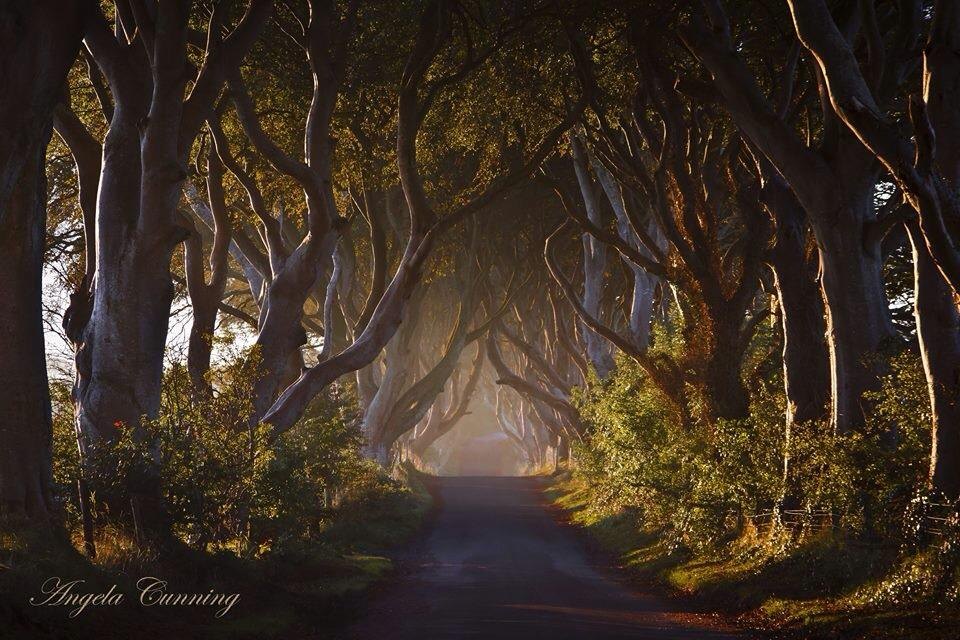
BEECH (Fagus sylvatica L.)
In 2014 ninety-four Beech trees (Fagus sylvatica L.) were surveyed and recorded as part of a Heritage Lottery Funded project commissioned by The Dark Hedges Preservation Trust and the Causeway Coast & Glens Heritage Trust. The trees ranged in age from mature to post mature which is estimated to be about 300 to 350 years. The life span of a typical Fagus sylvatica L. would be about 150-200 years.
Mature trees grow to a height of more than 40m, and develop a huge domed crown. The bark is smooth, thin and grey, often with slight horizontal etchings. The reddish brown, torpedo-shaped leaf buds form on short stalks, and have a distinctive criss-cross pattern.
Young leaves are lime green with silky hairs, which become darker green and lose their hairs as they mature. They are 4–9cm long, stalked, oval and pointed at the tip, with a wavy edge.
Beech is monoecious, meaning both male and female flowers grow on the same tree, in April and May. The tassel-like male catkins hang from long stalks at the end of twigs, while female flowers grow in pairs, surrounded by a cup. This cup becomes woody once pollinated, and encloses one or two beech nuts (known as beechmast). Beech is wind pollinated.
Interesting fact: beech can live for hundreds of years with coppiced stands living for more than 1000 years. [Woodland Trust]
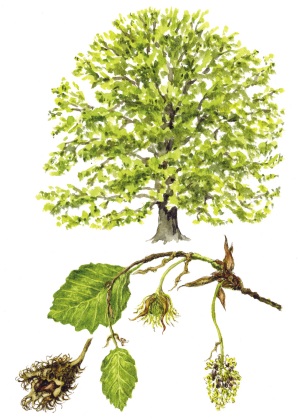
The beech woodland is home to a wide range of flora, mammals, birds and insects including:
The Brambling is a small bird similar in size and shape to the chaffinch, the male has a black head in summer, and an orange breast with white belly. In flight it shows a long white rump. Bramblings breed from Northern Scandinavia into Siberia. In winter they migrate south to the Mediterranean and west to Britain and Ireland. The Brambling is an irregular visitor. Instead of adopting a routine migration pattern they tend to move to where their food is easily found. Beech mast is an important component of the bramblings’ diet. Bramblings are usually seen foraging on the ground under a large area of mature, widely spaced and heavily cropping beeches.
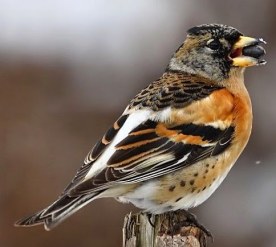
The Wood Mouse is sometimes known as the Long-tailed Field Mouse and is widespread, probably most common in woodland, rough grassland and gardens. It will gather food stores of berries and seeds in the autumn, which it keeps in underground burrows or sometimes in old birds’ nests. The Wood Mouse is mostly nocturnal. It can be distinguished by its golden-brown colour and relatively larger ears and eyes.
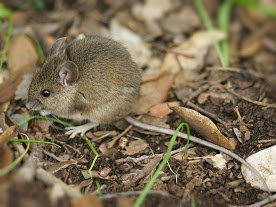
THE KINGS ROAD
More recently The Dark Hedges avenue has been featured as the Kings Road in the famous HBO series, Game of Thrones®.
A railway once passed under the bridge on the Bregagh Road; going from Ballymoney to Ballycastle; via Dervock, Stranocum, Gracehill and Capecastle. The Ballycastle Railway opened in 1880. It was a narrow gauge railway which operated passenger and freight services for almost 70 years until it was closed by the Ulster Transport Authority in 1950.

DARK HEDGES PRESERVATION TRUST
In 2004 the Department of the Environment (NI) Planning Service placed a Tree Preservation Order on The Dark Hedges. The Order is intended to ensure the preservation of the trees while allowing work to be undertaken to safeguard road users.
The Dark Hedges Preservation Trust was set up in 2009 to preserve and enhance the ancient trees, prominent in the landscape on the Bregagh Road in Stranocum. In preserving the trees it is also their intention to preserve an area of significant cultural importance and to use this importance to propagate an understanding of the value of the trees and their significance to the local community. With the help of Heritage Lottery Funding The Dark Hedges Preservation Trust project has four aims – to conserve and enhance The Dark Hedges, utilise the hedges as a learning tool and improve and develop interpretation around the hedges. The Dark Hedges Preservation Trust worked in partnership with the Causeway Coast & Glens Heritage Trust to deliver the project.
PARKING
There are coach/car parking and toilet facilities available at the Dark Hedges Estate – a two minute walk from The Dark Hedges. Contact the Estate to arrange parking. http://www.darkhedgesestate.com/
Please park safely and wisely!
HEALTH & SAFETY
These magnificent trees are past maturity and branch breakages are unfortunately common occurrences. In October 2017, in the interest of public health and safety and the preservation of the trees, the Bregagh Road was closed to all vehicular traffic (with exception to agricultural vehicles). It is also advisable to avoid walking under the trees during or following stormy weather conditions. Visitors to the site should also be aware that the Ballinlea Road is a public thoroughfare with traffic travelling in both directions.
LEAVE NO TRACE
The Dark Hedges is a picturesque site and therefore it is important that visitors leave no trace in terms of litter or damage to the trees.
OTHER ATTRACTIONS
With over 120 miles of coastline along the Causeway Coastal Route there is a plethora of spectacular attractions including Northern Ireland’s only World Heritage Site at the Giant’s Causeway. For more information visit:
- Causeway Coast & Glens Heritage Trust
- Causeway Coastal Route Alive
- Discover Northern Ireland | Causeway Coastal Route
- Causeway Coast & Glens
Go to the Dark Hedges Facebook page.
